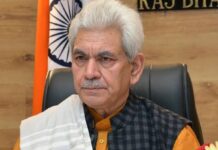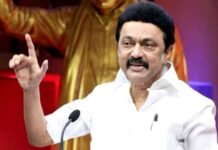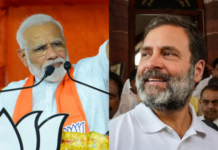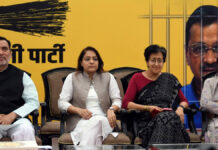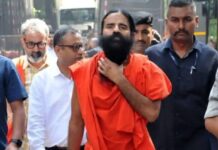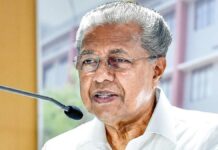Like in 2014, Prime Minister Narendra Modi remains a major factor in the 2019 general elections
India Post News Service
NEW DELHI: Though observers are saying that the Modi wave in this year’s Indian general elections is not what it was in 2014, the fact of the matter is that Prime Minister Narendra Modi continues to retain a larger than life image.
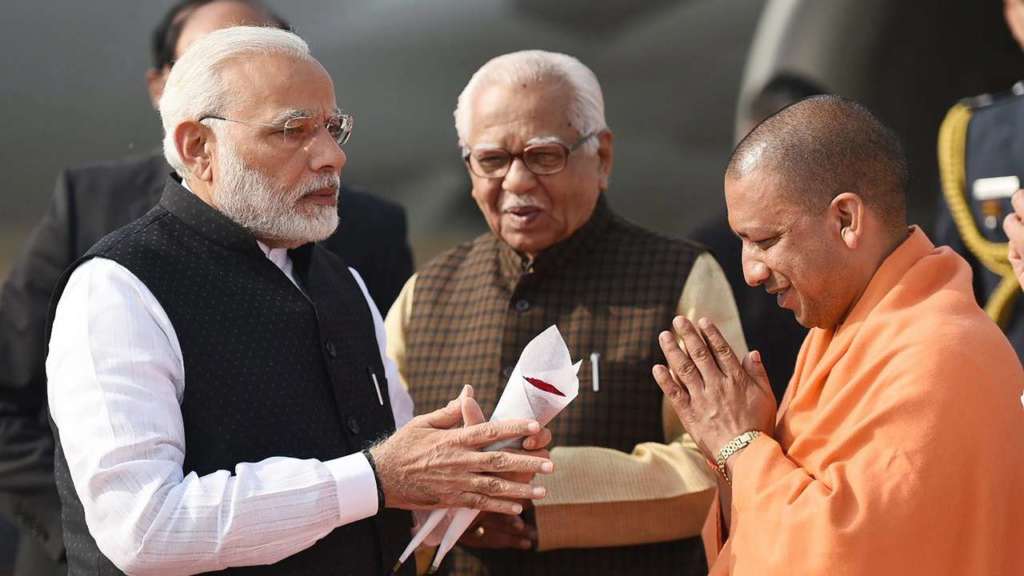
From surgical strikes against terrorists deep inside Pakistan to nationwide initiatives like Swachh Bharat, Modi continues to strike a chord within the hearts of the people. Just as he turned around the Congress’s “chaiwala” jibe in 2014 to his own political advantage, this time around he has taken on the grand old party’s president Rahul Gandhi’s charge of “chowkidar chor hain” over the Rafale fighter jet deal by tagging the word “chowkidar” to his Twitter handle and making other BJP leaders do the same.
Over the last five years, the National Democratic Alliance (NDA) government launched a number of schemes aimed at the uplift of the common man. With BJP attaining full majority in the Lok Sabha – the first by any political party in 30 years – the government could afford to announce a plethora of ambitious schemes.
Soon after coming to power in May 2014, the government launched the Pradhan Mantri Jan Dhan Yojana (PMJDY). It is a nationwide scheme to ensure financial inclusion of every individual who does not have a bank account in India. This scheme aims at providing access to financial services, namely, banking savings and deposit accounts, remittance, credit, insurance, and pension in an affordable manner to all.
Then in September 2014, Modi launched the Deen Dayal Upadhyaya Antyodaya Yojana. The scheme is aimed at reducing poverty and vulnerability of the urban poor households by enabling them to access gainful self employment and skilled wage employment opportunities, resulting in an appreciable improvement in their livelihoods on a sustainable basis, through building strong grassroots level. The scheme also addresses the livelihood concern of the urban street vendors by facilitating suitable space, institutional credit, and social security and skills for accessing emerging market opportunities.
Another scheme, Pradhan Mantri Awas Yojana – Housing for all by 2022, is an initiative by the government which aims at providing affordable housing to the urban poor. The mission is to provide housing for all by the year 2022, when India will complete 75 years of its Independence. Under this scheme, affordable houses will be built in selected cities and towns using eco-friendly construction methods for the benefit of the urban poor population in India. Also, under the Credit Linked Subsidy Scheme, beneficiaries under PM Awas Yojana are eligible for interest subsidy if they avail a loan to purchase or construct a house.
Another major initiative by the NDA government is the Digital India campaign. It is a campaign to ensure the Government’s services are made available to citizens electronically by improved online infrastructure and by increasing Internet connectivity or by making the country digitally empowered in the field of technology. The initiative includes plans to connect rural areas with high-speed internet networks. Digital India consists of three core components: the development of secure and stable digital infrastructure, delivering government services digitally, and universal digital literacy.
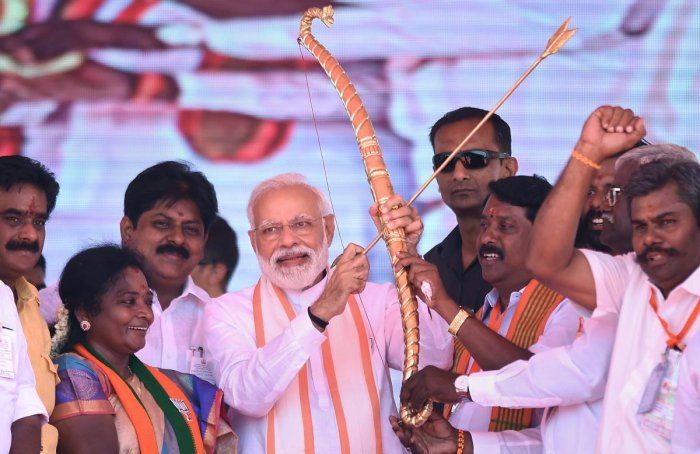 Another flagship initiative is Make in India. It is a type of Modi’s Swadeshi movement covering 25 sectors of the economy to encourage companies to manufacture their products in India and enthuse with dedicated investments into manufacturing. As a strategy it is the road map to respond to glocal (global + local) challenges through preparations for a world class manufacturing status and knowledge infrastructure that should create further knowledge for stepping on to global competitiveness.
Another flagship initiative is Make in India. It is a type of Modi’s Swadeshi movement covering 25 sectors of the economy to encourage companies to manufacture their products in India and enthuse with dedicated investments into manufacturing. As a strategy it is the road map to respond to glocal (global + local) challenges through preparations for a world class manufacturing status and knowledge infrastructure that should create further knowledge for stepping on to global competitiveness.
To empower the youth to find gainful employment, the government launched the Skill India campaign in July 2015. It aims to train over 40 crore people in India in different skills by 2022. It includes various initiatives of the government like “National Skill Development Mission”, “National Policy for Skill Development and Entrepreneurship, 2015”, “Pradhan Mantri Kaushal Vikas Yojana (PMKVY)” and the “Skill Loan scheme”.
Then, there is the Pradhan Mantri MUDRA Yojana (PMMY) launched by Modi for providing loans up to Rs 10 lakh to the non-corporate, non-farm small/micro enterprises. These loans are classified as MUDRA loans under PMMY. These loans are given by commercial banks, regional rural banks, small finance banks, cooperative banks, micro finance institutions and non-banking finmancial companies. The borrower can approach any of the lending institutions mentioned above or can apply online through this portal. Under the aegis of PMMY, MUDRA has created three products – namely ‘Shishu’, ‘Kishore’ and ‘Tarun’ to signify the stage of growth/development and funding needs of the beneficiary micro unit/entrepreneur and also provide a reference point for the next phase of graduation/growth.
Complete rural electrification was another dream of Modi. Under the Deen Dayal Upadhyaya Gram Jyoti Yojana, the target of rural electrification has been achieved and work like system strengthening is going on.
Farmers’ welfare has been another pet theme of the Modi government. For this, the Pradhan Mantri Krishi Sinchai Yojana (PMKSY) was launched in July 2015. The major objective of PMKSY is to achieve convergence of investments in irrigation at the field level, expand cultivable area under assured irrigation, improve on-farm water use efficiency to reduce wastage of water, enhance the adoption of precision-irrigation and other water saving technologies (More crop per drop), enhance recharge of aquifers and introduce sustainable water conservation practices by exploring the feasibility of reusing treated municipal waste water for peri-urban agriculture and attract greater private investment in precision irrigation system.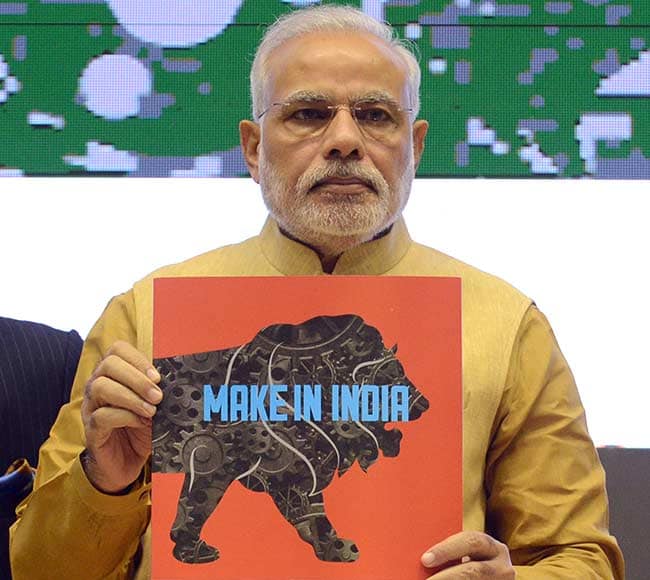
Another flagship of thne NDA government under Prime Minister Modi is the Swachh Bharat Mission.It is a nation-wide campaign in India for the period 2014 to 2019 that aims to clean up the streets, roads and infrastructure of India’s cities, towns, and rural areas. The campaign’s official name is in Hindi and translates to “Clean India Mission” in English. The objectives of Swachh Bharat include eliminating open defecation through the construction of household-owned and community-owned toilets and establishing an accountable mechanism of monitoring toilet use. The mission will also contribute to India reaching Sustainable Development Goal 6 (SDG 6), set by the UN in 2015.
To address the declining child sex ratio issue, the government launched the Beti Bachao, Beti Padhao campaign. It aims to generate awareness and improve the efficiency of welfare services intended for girls in India. The scheme was launched with an initial funding of Rs 100 crore ($14 million).
Foreign policy has been another strong forte of the Modi government. Soon after becoming Prime Ministerm Modi ensured that the UN declare June 21 as the International Yoga Day.
“Yoga is an invaluable gift of India’s ancient tradition,” Modi said in a speech at the UN September 27, 2014.
“It embodies unity of mind and body; thought and action; restraint and fulfillment; harmony between man and nature; a holistic approach to health and well-being,” he said.
“It is not about exercise but to discover the sense of oneness with yourself, the world and the nature. By changing our lifestyle and creating consciousness, it can help in well being. Let us work towards adopting an International Yoga Day.”
A major foreign policy initiative is the “Neighborhood First” policy. It aims at improving ties with India’s immediate neighbours. Though Pakistan continues to be under the foreign policy radar because of its support to terrorism, New Delhi boosted ties with other neighbours like Bangladesh, Nepal, Bhutan, Sri Lanka, Afghanistan and the Maldives.
Modi has also turned the Look East Policy to Act East Policy with the aim of increasing engagements with the 10-nation Association of Southeast Asian Nations (Asean) regional bloc. One of the key aims behind this is to increase India’s influence in the Indo-Pacific given China’s expanding footprint in the region.
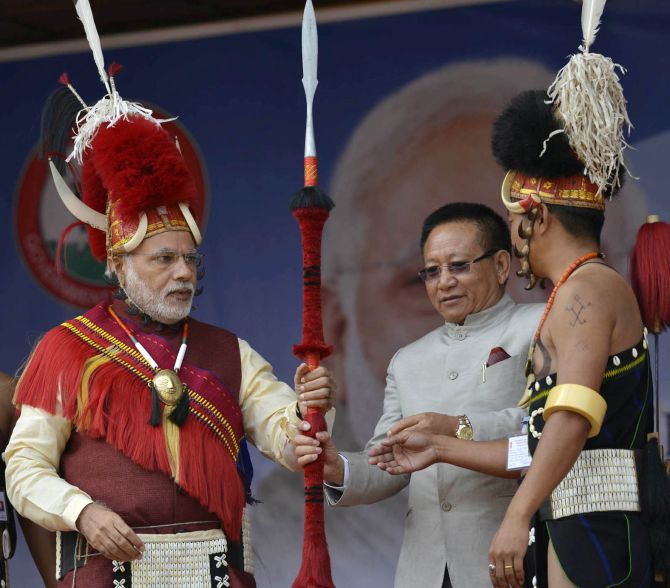
After the standoff between Indian and Chinese troops in 2017 at Doklam on the India-Bhutan-China international trijunction, ties between New Delh and Beijing got a boost when Chinese President Xi Jinping hosted Modi for an unprecedented informal summit in the city of Wuhan in 2018.
New Delhi also reached out to Africa in a big way. In July 2018, in a speech at the Ugandan parliament, Modi announced 10 guiding principles for India’s engagement with Africa.
India’s ties with the Islamic world, especially in the Gulf and the Middle East, saw significant improvement under Modi resulting in External Affairs Minister Sushma Swaraj getting invited as the guest of honor to the Organization of Islamic Cooperation (OIC) Foreign Ministers’ Summit in the United Arab Emirates (UAE) this year despite strong opposition from Pakistan. Earlier this month, the UAE also conferred its highest civilian award, the Order of Zayed, on Modi for his contributions to improving ties between India and the Gulf nation.
India also managed to maintain good relations with West Asian rivals Saudi Arabia and Iran. Modi also became the first Indian Prime Minister to pay stand-alone visits to both Israel and Palestine.
With Modi sharing a good personal chemistry with Japanese Prime Minister Shinzo Abe, India-Japan ties continued to be on the ascent. Major takeaways from this relationship over the last five years has been the start of work on the Ahmedabad-Mumbai high-speed rail and Japanese aid for infrastructure development in northeastern India.
With Russia too, ties remained strong. Like Xi Jinping, Russian President Vladimir Putin too hosted Modi to an informal summit in the resort city of Sochi last year giving a strong thrust to the bilateral relationship. Earlier this month, Putin announced that Modi has been conferred the Order of St Andrew the Apostle, Russia’s highest order.
Modi also has a good equation with US President Donald Trump. Notwithstanding irritants on trade issues, India and the US made “landmark” progress in 2018 to bolster their strategic and defence ties – from holding the maiden trilateral meeting with Japan to the first-ever 2+2 dialogue during which they signed the long-pending COMCASA agreement that would open the way for sales of more sensitive US military equipment to India.
The trade disputes posed bumps on the road as President Donald Trump called India a “tariff king” in September last year. However, two months later, he praised Indians as tough negotiators as the two countries started talks on a bilateral trade deal.
India was among the few countries, which received a waiver on Iran sanctions from the Trump administration, which also pressed Pakistan to bring to justice the perpetrators of the 2008 Mumbai attack and announced a reward of $5 million for information leading to the arrest or conviction in any country of any individual who committed, conspired to commit, or conviction in any country of any individual who committed, conspired to commit, or aided the 26/11 attack.
In his campaign for the elections this year, Modi has made national security and fighting terrorism a key issue. He has not hesitated in mentioning the surgical attacks carried out deep inside Pakistan after the cross-border terror attack at an army camp in Uri in Jammu and Kashmir and attack on the a Central Reserve Police Force (CRPF) convoy on the Jammu-Srinagar in February this year.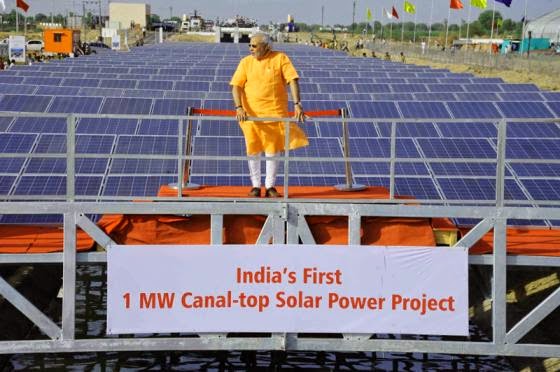
India has also managed to include condemnation of terrorism in all its forms and manifestations with particularly with reference to Pakistan in virtually every bilateral and multilateral agreement it has signed over the last five years.
In keeping with the theme of nationalism, the National War Memorial, a monument constructed in the vicinity of the India Gate, New Delhi, was inaugurated in February this year to honour India’s Armed Forces. Names of martyrs during 1947-48, 1961 (Goa), 1962 (China), 1965, 1971, 1987 (Siachen), 1987-88 (Sri Lanka), 1999 (Kargil), and other operations such as Operation Rakshak, are inscribed on the memorial walls.
Another major priority for the NDA government is create a friendly business environment in the country. Under Modi, India’s rank in Ease of Doing Business has improved from 142 to 77.
Modi’s connect is also well-known. Over the past five years, he has big rallies in places with large Indian diaspora like New York, Silicon Valley, Sydney, Singapore, Dubai and London.
Despite his high-flying public life, Modi has kept his personal life low profile. His brother Prahlad Modi, a trader by profession, lives in Ahmedabad along with their mother Heeraben Modi.
Earlier this year, over 1,800 mementos that Modi had received were sold at an auction, the proceeds from which will go towards the Namami Gange, a central government project to clean the Ganga.
During the auction at the National Gallery of Modern Art, a specially handcrafted wooden bike received a successful bid of Rs 5 lakh. A similar bid was received for a painting that shows Modi on a railway platform.
Among the other big-ticket sales was that of a Shiva statuette, which had a base price of Rs 5,000 but sold for Rs 10 lakh, the PMO statement said.
A wooden replica of the Ashoka Pillar, with a base price of Rs 4,000, fetched Rs 13 lakh while a traditional horai – an offering tray with a stand – from Majuli, Assam, brought Rs 12 lakh against a base price of Rs 2,000. A statuette of the Buddha, which had a base price of Rs 4,000, sold for Rs 7 lakh.
“Prime Minister Modi, even as chief minister of Gujarat, used to auction mementos received by him so that the proceeds could go (towards) the education of girl children,” the Prime Minister’s Office swaid in a statement.
“Continuing the same practice, he has now enabled the collection of funds which will help clean up the holy river Ganga.”
In 2015 too, the suit worn by Modi with his name woven into it in gold pinstripes made headlines after a three-day auction that saw businessmen, diamond merchants and a teacher making offers.
The suit finally went to Laljibhai Patel, a Surat-based diamond merchant, for Rs. 4.31 crore and the money was assigned for Namami Ganga.


